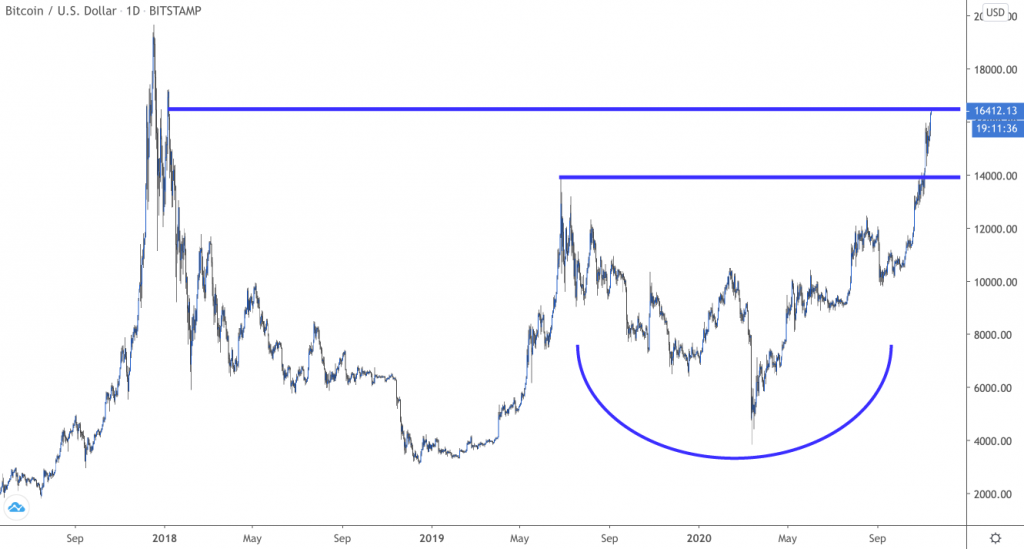Bitcoin is making another parabolic move higher and chart watchers say it could soon rise to $20,000.
2020 is feeling a bit like 2017. That is, if you’re looking at the rising price of bitcoin.
The digital currency went on a wild ride in the fall of 2017, rising from around $4,400 at the beginning of October to an all-time high of $19,783.06 on December 17, 2017. From January 1, 2017 to the record high on December 17, bitcoin rose 1,824%.
Cut to 2020. The coronavirus pandemic and ensuing global recession has investors seeking hedges and flooding into bitcoin once again.
The digital currency has been getting a boost lately from high-profile investments from Square (NYSE: SQ) and PayPal (NASDAQ: PYPL), and investing legend Paul Tudor Jones.
Bitcoin fell to $3,875 on March 12 when the rest of the market was crashing and has been on a steady climb since. And on Thursday, the biggest digital currency rose to $16,450 – a price not seen since January 2018.
And bitcoin looks set to continue to move higher.
“When we looked at a chart of bitcoin, we could see a very strong technical setup here that we believe is setting up for further upside,” said JC O’Hara, chief market technician at MKM Partners.

“It’s already breaking above the 2019 highs and from a technical perspective, there’s really not resistance until we have to go all the way back to December 2017,” O’Hara said. “So, in order to get to that level, we’re seeing another 20% higher for bitcoin. So, I think that’s the play here in the weeks to come.”
Bitcoin is currently sitting around 17% from its all-time high from December 17, 2017, and chart watchers are now eyeing a very round number.
After taking out the June 2019 high at $13,800, according to Fundstrat Global Advisors LLC technical strategist Rob Sluymer, the next resistance is at around $20,000 – nearly 22% higher than the price as of this writing.
“Previous bitcoin resistance at about $10,000 may transition toward $20,000 in 2021,” said Mike McGlone, commodity strategist at Bloomberg Intelligence. “Certain supply leaves demand as the primary price metric, and most indicators remain positive.”